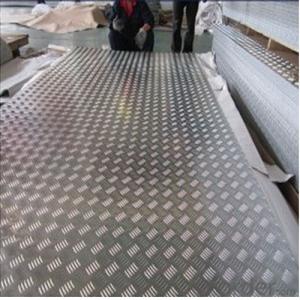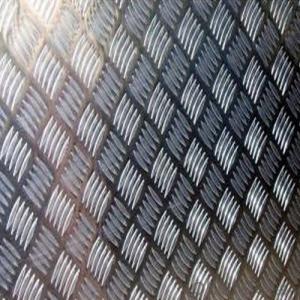3 8 Aluminum Diamond Plate
3 8 Aluminum Diamond Plate Related Searches
Led Light Bulbs For Ceiling Fixtures Led Lamps For Ceiling 42 In Ceiling Fan With Light Aluminum Coil Stock For Gutters Aluminum Foil For The Grill Hole Saw For Aluminum Plate Aluminum Tread Plate For Trailer Bow Plate For Aluminum Boat Aluminum Foil For Grow Room Aluminum Foil For Joint PainHot Searches
Stock Price For Aluminum Aluminum Coil Stock For Sale Aluminum Gutter Coil For Sale Used Aluminum Scaffolding For Sale 1/4 Aluminum Plate For Sale Aluminum Bar Stock For Sale Aluminum Round Stock For Sale Aluminum Diamond Plate For Sale Aluminum Scaffolding For Sale Craigslist 6061 Aluminum Plate For Sale Aluminum Dock Plate For Sale 7075 Aluminum Plate For Sale Aluminum Tread Plate For Sale Aluminum Checker Plate For Sale Aluminum Plate For Sale Near Me Plate Aluminum For Sale Aluminum Plate For Sale Aluminum Square Stock For Sale Aluminum Flat Stock For Sale Billet Aluminum Stock For Sale3 8 Aluminum Diamond Plate Supplier & Manufacturer from China
Okorder.com is a professional 3 8 Aluminum Diamond Plate supplier & manufacturer, offers integrated one-stop services including real-time quoting and online cargo tracking. We are funded by CNBM Group, a Fortune 500 enterprise and the largest 3 8 Aluminum Diamond Plate firm in China.Hot Products
FAQ
- Due to their unique properties and versatility, aluminum sheets find various applications in the construction industry. Construction projects often utilize aluminum sheets for roofing, siding, cladding, windows, and doors. In roofing applications, aluminum sheets are ideal due to their lightweight yet durable nature. They can withstand harsh weather conditions, such as strong winds and heavy rainfall, without corroding or deteriorating. For siding applications, aluminum sheets are commonly chosen for their resistance to rust and corrosion. They not only provide protection but also enhance the overall appearance of buildings with an aesthetically pleasing finish. Furthermore, aluminum sheets can be easily shaped and bent to fit intricate or curved architectural designs. Cladding is another common use of aluminum sheets in construction. It serves to cover the exterior walls of buildings, providing insulation and protection against weather elements. By acting as a thermal barrier, aluminum cladding helps reduce energy consumption by keeping the interior cool in summer and warm in winter. It is also fire-resistant, making it a safe choice for construction projects. Moreover, aluminum sheets are frequently employed in the construction of windows and doors. Their lightweight nature makes them easy to handle and install, while their strength ensures durability and longevity. Additionally, aluminum sheets can be powder-coated or anodized, offering a wide range of color options to suit different architectural styles and preferences. In summary, aluminum sheets are commonly used in construction for roofing, siding, cladding, windows, and doors. Their lightweight, durable, and corrosion-resistant properties make them an excellent choice for various construction projects, providing both functional and aesthetic benefits to buildings.
- When deciding on the appropriate thickness for your aluminum sheet, there are several factors that should be taken into account. To begin with, it is essential to determine the intended use or purpose of the aluminum sheet. Different projects may necessitate varying thicknesses depending on their structural or aesthetic requirements. For example, if the aluminum sheets are intended for roofing or siding applications, a thicker gauge may be necessary to ensure sufficient durability and resistance to weather conditions. Moreover, the level of strength and rigidity required should be considered. Thicker aluminum sheets generally offer greater strength and stability, which is especially important for applications like construction or automotive components. However, it is important to bear in mind that thicker sheets may also be heavier and more challenging to work with, so the practicality and weight limitations of your project should be taken into consideration. Additionally, the size of the aluminum sheet needed should be thought about. Larger sheets may require thicker gauges in order to maintain their structural integrity, whereas smaller sheets may not require as much thickness. Lastly, your budget should be factored in. Thicker aluminum sheets can be more expensive due to increased material costs and the manufacturing process. It is advisable to strike a balance between the required thickness and your budget constraints to ensure a cost-effective decision. To summarize, selecting the appropriate thickness for your aluminum sheet involves considering the specific application, required strength, size, and budget. It is recommended to seek guidance and advice from industry experts or suppliers who can provide tailored recommendations based on your specific needs.
- Aluminum sheet is not inherently fire-resistant, but it does have certain properties that make it more fire-resistant than other materials. Aluminum has a high melting point, which means it can withstand high temperatures without melting or catching fire. Additionally, aluminum has a low thermal conductivity, meaning it does not easily transfer heat. This makes it more difficult for fire to spread across an aluminum sheet. However, it is important to note that aluminum can still be affected by fire. When exposed to extreme heat, aluminum can weaken and lose its structural integrity. It can also become more susceptible to burning if exposed to certain chemicals or intense flames. To enhance the fire resistance of aluminum sheet, it can be coated with fire-retardant materials or treated with fire-resistant coatings. These additional measures can help to further reduce the risk of fire and improve the overall fire performance of the aluminum sheet. In summary, while aluminum sheet is not completely fire-resistant, it does possess certain characteristics that make it more resistant to fire than other materials. However, it is crucial to take appropriate precautions and use additional fire-resistant treatments when necessary to ensure maximum safety.
- This is kind of odd, but if a volcano erupted and the lava dripped into an aluminum can, would the can melt? Would the lava harden and cool in it?
- Aluminum cans melt at about 1220 F. Lava is about 1300F to 2400F. The can would melt into the lava.
- Yes, aluminum sheets can be used for manufacturing electronic heat sinks due to their excellent thermal conductivity and lightweight properties, making them effective in dissipating heat from electronic components.
- The reflectivity of 101 aluminum sheets may differ due to various factors including the surface finish, thickness, and any additional coatings or treatments applied to the sheets. Typically, aluminum exhibits a high reflectivity, particularly in the visible light spectrum, and can effectively reflect approximately 80% to 90% of visible light. This attribute makes it widely used for creating reflective surfaces, mirrors, and various lighting applications. However, it is important to acknowledge that the precise reflectivity of 101 aluminum sheets can vary due to specific manufacturing processes or variations in the material properties.
- Yes, aluminum sheets are suitable for electrical connectors. Aluminum is a highly conductive metal, which makes it an excellent choice for transferring electric current. It has a low electrical resistance, allowing for efficient transmission of electricity. Additionally, aluminum is lightweight, corrosion-resistant, and cost-effective, making it a popular material for electrical connectors in various industries such as automotive, aerospace, and electronics. However, it is important to note that aluminum connectors may require additional measures to prevent galvanic corrosion when used with dissimilar metals.
- Indeed, insulation jackets can indeed employ aluminum sheets. Aluminum possesses exceptional thermal conductivity characteristics, enabling it to proficiently deflect heat and hinder the transmission of thermal energy. Consequently, it becomes the perfect substance for insulation jackets, as it aids in preserving temperature regulation and reducing heat loss or gain. Furthermore, aluminum sheets are lightweight, long-lasting, and impervious to corrosion, rendering them a pragmatic option for insulation applications.














































